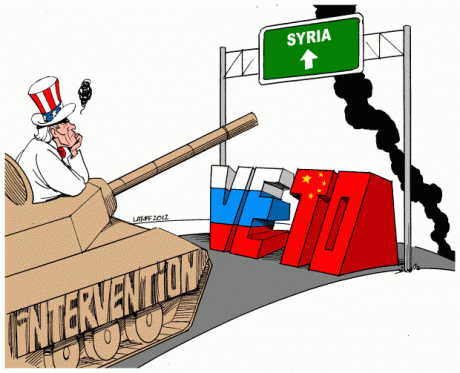Features
You are here
US weakness and imperial rivalry

October 23, 2013
The US drawback from a war with Syria has exposed some serious weakness at the top of the global pecking order. The US is still the world’s largest economy and by a wide margin the world’s largest military, yet its own political and economic weaknesses were prominently on display during the Syria crisis and the government shutdown.
The Obama administration didn't have the political support for an attack on Syria either domestically or internationally, and Russia as arbiter of the crisis has come out looking like a more prominent player on the international scene. Russia was also significantly bolder in trying to project its own military power, having sent a group of warships to the eastern Mediterranean at the same time the US was massing forces for the attack.
Shifting alliances
The Russian economic alliances, particularly with China through groups such as the Shanghai Cooperation Organization, have begun calling for a new world order that deposes the US as the dominant power. This is still a long way off but the confidence to challenge US hegemony is clearly higher than before.
The emerging BRIC countries (Brazil, Russia, India and China) have already agreed to implement a new non-US centered development bank that can be a substitute for the IMF and the World Bank. Angola is the first African state to decide that it no longer wants to subject itself to the terrible impacts of structural adjustment programs, and has opted for the BRIC model.
The economic crisis and the US government shutdown and possible default has even led the Chinese state news agency, Xinhua, to call for the US to step back from its role as global cop and economic arbiter. Its editorial, “U.S. fiscal failure warrants a de-Americanized world,” states: “Instead of honoring its duties as a responsible leading power, a self-serving Washington has abused its superpower status and introduced even more chaos into the world by shifting financial risks overseas, instigating regional tensions amid territorial disputes, and fighting unwarranted wars under the cover of outright lies.”
The emergence of China
The US has seen the writing on the wall for years as they watched China emerge as the next largest economic competitor. There is a new scramble for Africa pitting the US against China—from the division of Sudan, to wars in Mali and Libya. The Pentagon is also developing plans for a “Pivot to Asia” which is calling for a much larger military presence in the Pacific off the Chinese coast. This is being done to protect US interests and project its military power in the region.
Not to be outdone, Russia is now talking of its own pivot to Asia involving a new and massive energy development pact between the China National Petroleum Corporation and two major Russian energy companies, Gazprom and Rosneft—which recently signed a deal with Venezuela. It is expected that energy trade between Russia and China will quadruple in the next ten years.
The relationship between the US and China is complicated and contradictory. China holds a huge amount of US debt and relies on the US market for a huge amount of exports. What we are seeing is that Russia and other regional powers are starting to usurp the dominant US role in the region, causing headaches for the US rulers who want desperately to maintain their own position.
War, resistance and revolution
The US ruling class is seriously divided on what steps to take to maintain its power. There are some in Washington who are now calling for a new pivot back to securing the Middle East since they are being shut out of new energy deals between China, Russia and other central Asian players such as Iran. Some want to see the US use its dominant military to try once again to secure the Middle East, but the quagmires in Iraq and Afghanistan, the roughly $5 trillion cost of those wars, are raising the stakes of a “double or nothing” attack on Iran.
The potential for inter-imperialist conflict is growing. We have seen blips of this over the past decade. The saber rattling from Washington against the Russian assault on South Ossetia—near the border with US ally, Georgia—showed that there were clearly competing interests between the two former Cold War adversaries.
The economic crisis is sharpening the long-term decline of US economic power, while resistance movements are undermining the military wars that are trying to compensate. As a result we are entering an unstable multipolar world, as the US National Intelligence Council wrote a few years ago: “By 2025, the international system will be a global multipolar one…Historically, emerging multipolar systems have been more unstable than bipolar or unipolar ones…Strategic rivalries are most likely to revolve around trade, investment, and technological innovation and acquisition, but we cannot rule out a 19th century-like scenario of arms races, territorial expansion, and military rivalries.”
The potential for larger regional or global conflict is real, but there’s an alternative. The anti-war movement of 2003 stopped many counties (including Canada) from going to war in Iraq, and in 2013 has so far stopped war on Syria. The answer to global war is global resistance, against the endless wars and the capitalist system that produces them.
Section:
Topics:










